👋 I’m so glad YOU are here. Are you looking to also get your partner prepared? This is for BOTH of you. Couples just love it and I know you want to both feel prepared!
Oh man, 38 weeks is when things start to get pretty miserable, right? I remember the subtle art of dragging each foot as I hauled a kid into school or walked into Target to get those last minute baby items. It was miserable. But WHY? Let’s talk about why your pelvis might be ready to throw up the white flag, and is showing you with some severe pelvic girdle pain in pregnant people.

Before we get started….
Hi — I’m Hilary — The Pregnancy Nurse 👩⚕️. I have been a nurse since 1997 and I have 20 years of OB nursing experience, I am also the curly head behind Pulling Curls and The Online Prenatal Class for Couples. 🩺 I have helped hundreds of patients with this problem along with suffering with it myself on my last baby — so, I’m a good resource for this!
Join my pregnancy tailored-to-you emails so you can get prepared in these final weeks:
And, as always this is NOT medical advice, just here to give you some ideas of what may be making it hard to walk!
What is pelvic pain during pregnancy and what are the causes?
Pelvic pain during pregnancy is a common condition called symphysis pubis dysfunction (SPD). It is caused by the hormone relaxin (one of the pregnancy hormones), which helps to loosen up your tendons and ligaments for childbirth. Relaxin also causes your pelvis to widen, which can cause instability in the joints of your pelvis.
This instability can lead to pain in your pubic bone, hips, groin and lower back. It is especially common after the 34th week of pregnancy (or later into your third trimester).
Baby’s head may also engage into the pelvis causing it to separate further. Making it hard to find a comfortable position for pregnant women. Other causes of pelvic pain during pregnancy can include ligament strain, sciatica and round ligament pain.
Of course, it’s always hard to know what’s “normal” and what’s a serious problem you need to see your provider about, and we talk all about that in here.
How do you know you have symphysis pubis dysfunction vs “normal” pregnancy pelvic pain?
In talking with LOTS of patients, I feel like the REAL sign of SPD is if putting pants on is painful. I know it sounds crazy, but in this simple act the pain can be severe.
The act of moving one leg while remaining weight bearing on the other was almost unbearable from about 30 weeks on of my pregnancy.
Why did I not sit on my bed to put my pants on? I’ll never know, but I really think that’s a sign that something is really wrong with your pelvis. I’ve talked with so many patients who either said — no, that doesn’t hurt much. Or some people’s eyes light up and say “OH — yes! Putting on pants is the WORST.”
That’s just a personal observation, but people with “normal” pregnancy pelvic pain don’t tend to have that issue.
That isn’t to say that their pain isn’t as bad or can’t be helped — it’s just different.
What’s the Pelvic Girdle: It’s all the muscles surrounding your pelvis that keep it in place (these are stretched with pregnancy too, so you’re hit on two fronts!). Some people call pelvic girdle pain PGP
Some people also get what they refer to is “lightening crotch” where it feels like you’re “zapped” right in the front of your pelvis. In reality this bone pain feels VERY different than ligament pain (but it takes time to feel the difference). I talk about that in my post on hip pain in pregnancy.
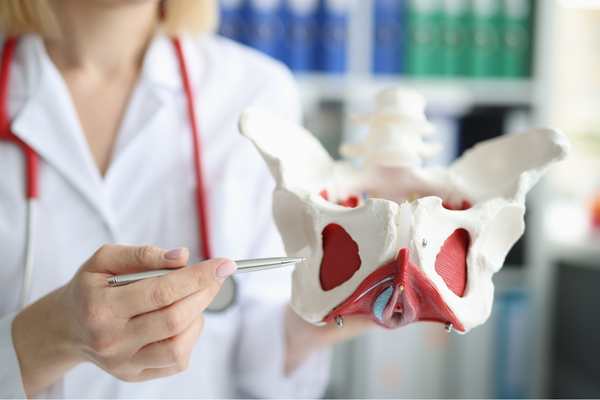
What if it’s not SPD?
Then, as I said before, most often this pain is due to ligament pain or sciatica. Pelvic ligaments (called the round ligaments) get over-stretched, especially when you do things like:
- Turn too fast
- Cough or sneeze
- Get-up too quickly
- Standing for long periods
That can cause sharp pains that are normally around your pelvic bone and on the sides of your lower abdomen.
It can be other things though too (I have a whole post on pain between your legs during pregnancy you might find helpful).
You may also have pelvic pressure from baby’s head being so low. If you have a cervical exam your provider may mention baby’s head is low and that will cause a LOT of uncomfortable pressure in that area!
It can also be a symptom of diastasis recti where the abdominal muscles are separating (due to your protruding uterus) and causing strain on your pelvis too.
Pelvic pain CAN be a yeast infection, an STI or sometimes a bladder infection. So it’s definitely worth talking to your doctor, especially if you have burning when you pee or you see a change in vaginal discharge.
How to relieve pelvic pain during pregnancy?
If you are experiencing pelvic pain during pregnancy, there are a few things you can do to help alleviate your symptoms. One of the most important is rest.
Taking time out of your day to relax and give your body a break from activities that contribute to the pain can be beneficial. It’s also important to maintain good posture, wear supportive footwear and avoid activities that put too much strain on your pelvic region.
Stretching and prenatal yoga may also be helpful. However, some of the moves may make it worse — so be mindful of what helps or hurts!
The next is to figure out the origin of the pain. If it’s ligament pain things like rest, heat, and changing how you move may help.
If it’s an infection, you will need treatment, so if you’re confused by it — talk with your doctor or midwife!
A physical therapist or chiropractor can also be helpful in treating SPD (much better than your doctor or midwife). They can help you with exercises to strengthen your core and pelvic muscles as well as provide manual therapy for the painful joints in the area. If these interventions don’t relieve your pain enough, your doctor or midwife may prescribe a pelvic belt to provide extra support.
It’s important to remember that SPD is temporary and will usually resolve itself after childbirth. However, seeking treatment can help you get through the last few weeks of pregnancy with more comfort (as well as giving you ideas on how to help it after baby as well)!
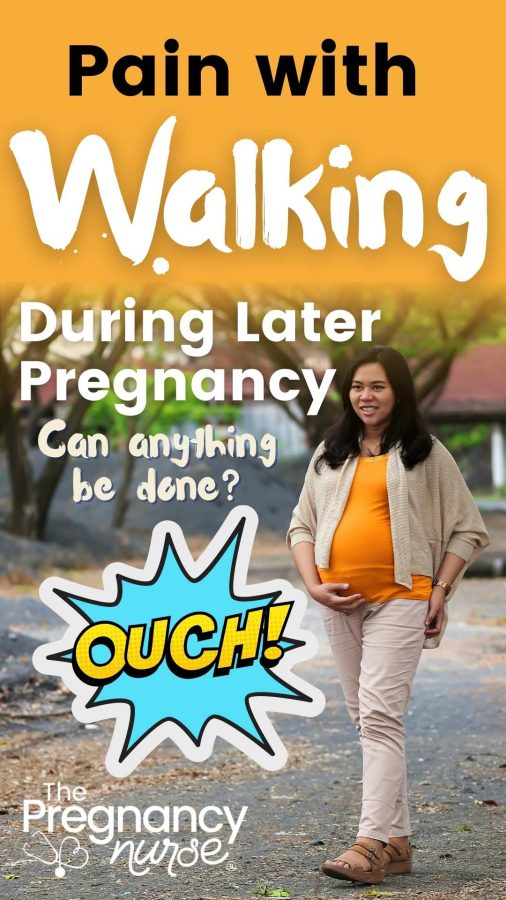
When to seek medical help for pelvic pain during pregnancy
Honestly, there is ALWAYS going to be some pelvic pain during pregnancy — it is definitely not an unusual pregnancy symptom. Most often that is a sign to rest and put those legs up because they need a break from carrying around two bodies. Definitely worth talking to your provider about at your regular appointments though, as they may have some medical advice for you.
If you find that the pelvic pain is impacting your day to day activities, or if it has become unmanageable, it may be time to see a health care provider (and I mean call their office and make a new appointment or see if they’ll just refer you to physical therapy). A doctor can provide advice on what type of treatment you should pursue and can help diagnose any underlying conditions. Treatment options may include physical therapy, pain medication, or other interventions to reduce the pain and increase your comfort level.
If your hip pain is bad enough (and they think the SPD is really bad) they may opt for a caesarean section since you wouldn’t then have the additional trauma of labour and then the baby coming out your pelvis or birth canal as baby is born.
Additionally, if you are experiencing any other symptoms such as vaginal bleeding or contractions (more than they say you should have), you should notify your doctor right away. Your health care provider can evaluate your condition and determine the best course of action for managing your symptoms.
Other ways to reduce pelvic pain during pregnancy:
Heads up! 👀 There may be affiliate links in here – I might earn a smidge with your click. No cost to you, just good vibes! Check my boring stuff for deets.
• Avoid activities that put too much strain on the pelvic area (getting in the car, stairs, putting on pants — if an activity hurts, try to figure out another way to do it or have someone ELSE do it)
There were a lot of household jobs that I just stopped doing after 36 weeks. I couldn’t bend down or do the things I used to, my partner needed to pick-up the slack and that is OK!
• Wear supportive and properly fitting shoes (this sounds dumb, but it REALLY does matter — time to put those high heels away for a few weeks)
• Use a warm compress, a heating pad, or take a warm bath to help relieve the pain — the warm water helps those ligaments relax (but if you have SPD getting in and out of the tub may be too painful)
• Practice relaxation techniques such as deep breathing, meditation, positive affirmations and yoga.
• Sleep on your side with pillows between your legs or use a pregnancy pillow to support your hips and back. Don’t forget about the FRONT part of your belly too, put a pillow under it to support there too!
• Talk to your doctor about using medications such as acetaminophen for pain relief.
• Wear a pelvic support belt or belly straps for extra support if needed {more on this later)
• See a physical therapist, chiropractor, or other healthcare provider for treatment options (this can be REALLY worth it, even though I know the idea of another appointment can seem overwhelming)
What can a physical therapist chiropractor do?
Their JOB is joints. Much more than your OB’s job is joints.
A chiropractor may be able to maniputlate those pelvic joints and the sacroiliac joints to help bring your body back into alignment. I had a chiropractor on my podcast to talk about what she can do — listen to it right here:
A physical therapist will be able to give you exercises, ways to do things (like putting on your pants) that make it easier.
I also had a physical therapist on my podcast to talk about how she can help SPD:
This study had some good information on how chiropractors and PT can help (because sometimes doctors are weird about referring you out).
As a note — no one can HEAL this until the baby is out. Your body will still pump out those hormones until the placenta is out, but you can feel more comfortable through these things as you head into your due date by changing a few things.
In reality if you have really bad SPD, it may be a reason to be induced at 39 weeks. The longer baby is in your pelvis and those joints are moving unevenly the logner it will take to heal.
Please to talk to your doctor if you feel like you need this. The controversial Arrive trial did show that 39 week inductions should be offered to pregnant women if possible (and it’s not always possible due to hospital needs). However, it wouldn’t be a time to induce earlier — baby develops a lot in those last few weeks and we don’t want to do it until baby is ready.
I have a special video on the Arrive Trial and why some providers love it and some hate it in The Online Prenatal Class for Couples where we talk more about it and how you can talk to your provider about it for YOUR needs.
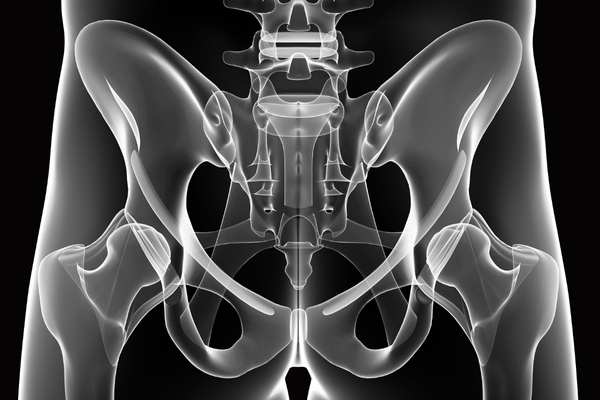
My Story with Pelvic Pain
I just wanted to let you know my story with pelvic pain. So, 2nd child was almost 2 pounds bigger than my first. I had a LOT of severe tailbone pain for about 2 years after him with no relief. We also struggled with infertility trying to get pregnant with #3, and that didn’t happen til’ he was over 4.
Right after I got pregnant the tailbone pain came back.
By the time I was hitting my third trimester things were getting more and more unbearable — I also had pain under my braline. I didn’t know what to do. Most people thought it was my tailbone — but fast forward my tailbone pain was caused do to the instability to my pelvis and SPD. Which I didn’t learn for years.
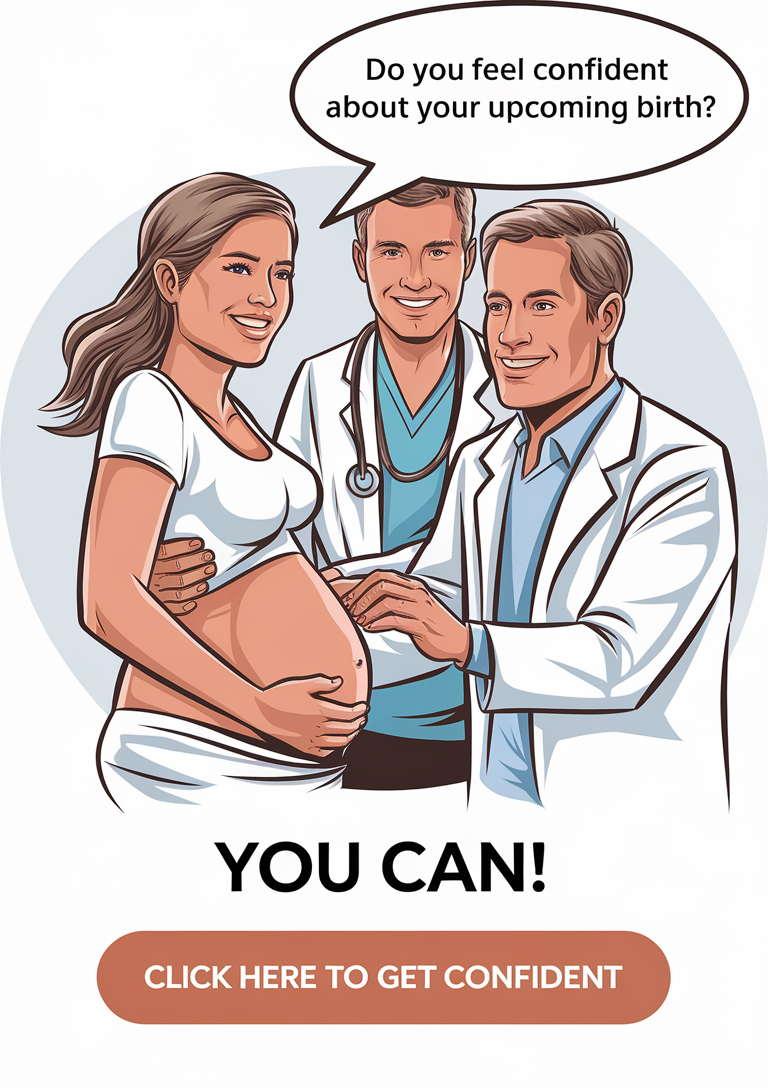
Why I wish I’d worn a pelvic support belt
I didn’t find out about SPD until I was postpartum, and back to work and DYING with severe pain.
The reality is that it took quite a while to separate my pelvis while I was pregnant and it took even longer to heal. The pain was probably even worse after baby because I thought I should just be better. Because it was so bad it even extended into lower back pain and groin area (probably because those muscles were also trying to help compensate).
I always wondered why it was SO much worse at work — and I think it was due to the scrubs I wore. They provided NO help to pushing my hip bones together (vs my regular life where I wore tighter pants that helped).
I didn’t have this issue with my first baby, but my second baby was 9 pounds, and I felt a lot of tailbone after him (which was probably un-diagnosed SPD), but after my third it was pain all over my pelvis.
Honestly, I’d even been to PT for the pain in my ribs. I also mentioned the tailbone pain — but they didn’t really have answers for either. Which is a same. I feel like PT has gotten much better on this issue since 2009.
The good news was that a friend of mine helped me get a pelvic support belt and it helped SO much. I WISH someone had told me about them during pregnancy. The key with this is to wear it OVER your hips. Which made a pretty ugly bulge in my backside/hips but I didn’t care. I just wore my scrub tops longer to make sure that area was covered.
My SPD healed into some pretty severe plantar fasciitis. Which was extremely painful. I think that my hips sort of twisted which pulled at the muscles down my leg and into my feet. Ultimately a lot of mobility exercises to help my hips to properly move and align REALLY helped — in case you’re a poor case like me.
I just want you to know that a lot of people say “this is normal” and while generalized pelvic pain IS normal, debilitating pain is not — and there ARE people and things out there that can help — even if you have to try a bit on your end to get the help. This study shows that it can have long-term consequences.
Communication with healthcare providers can be hard — come join me in The Online Prenatal Class for Couples where we have a whole bonus video on communication plus many other helpful lessons to help you through the rest of your pregnancy and birth.
If you think it’s too late, you’re wrong. The class can be done in just about 3 hours and I know you’re going to feel a LOT of relief from feeling so much more prepared!
And, if you’re not quite sure you’re ready for that whole thing, check out my free prenatal class. It’s your first step toward getting in the driver’s seat of your birth.


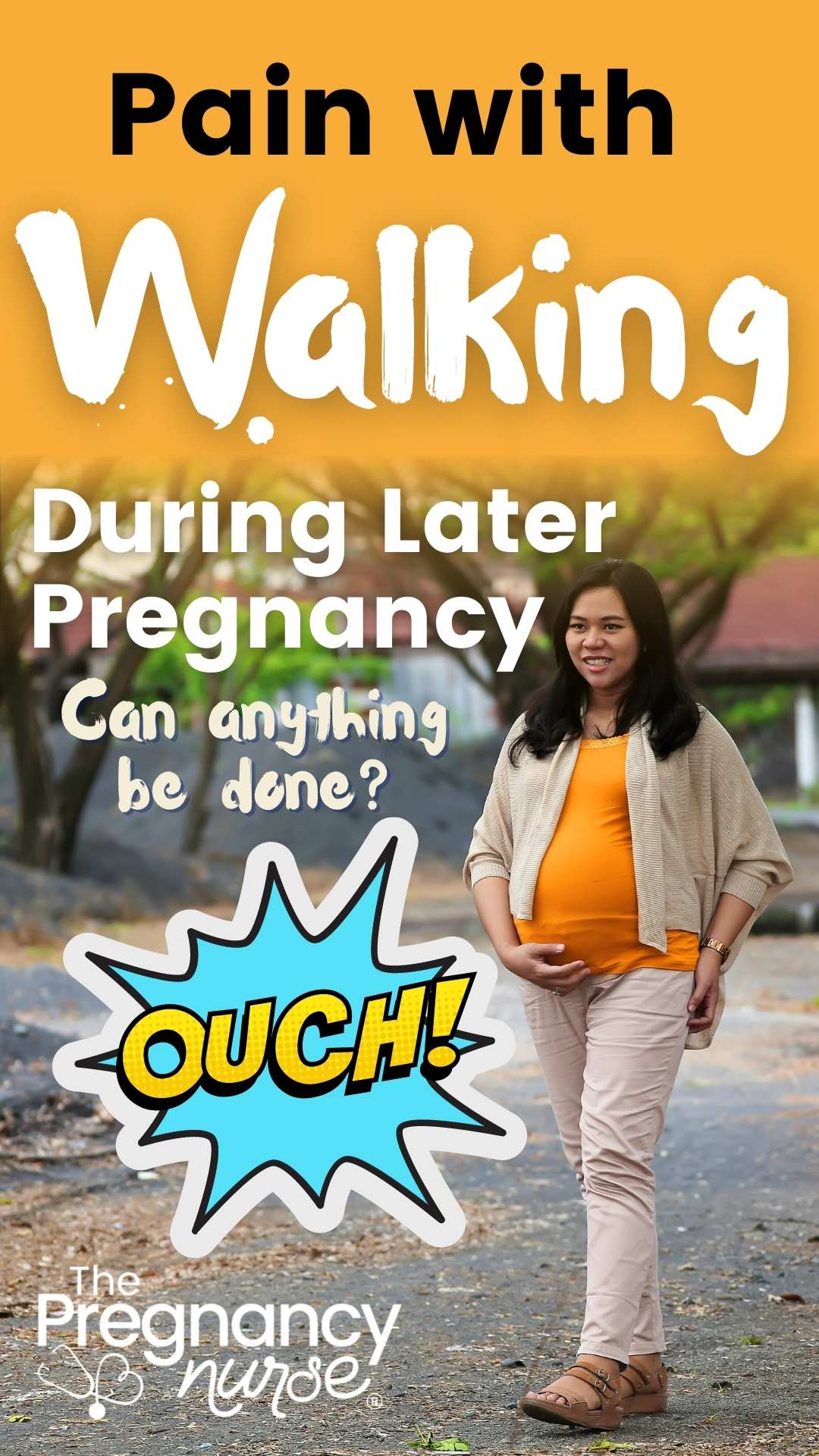




 Drinks for Pregnant Women: What are the best drinks during pregnancy?
Drinks for Pregnant Women: What are the best drinks during pregnancy?
